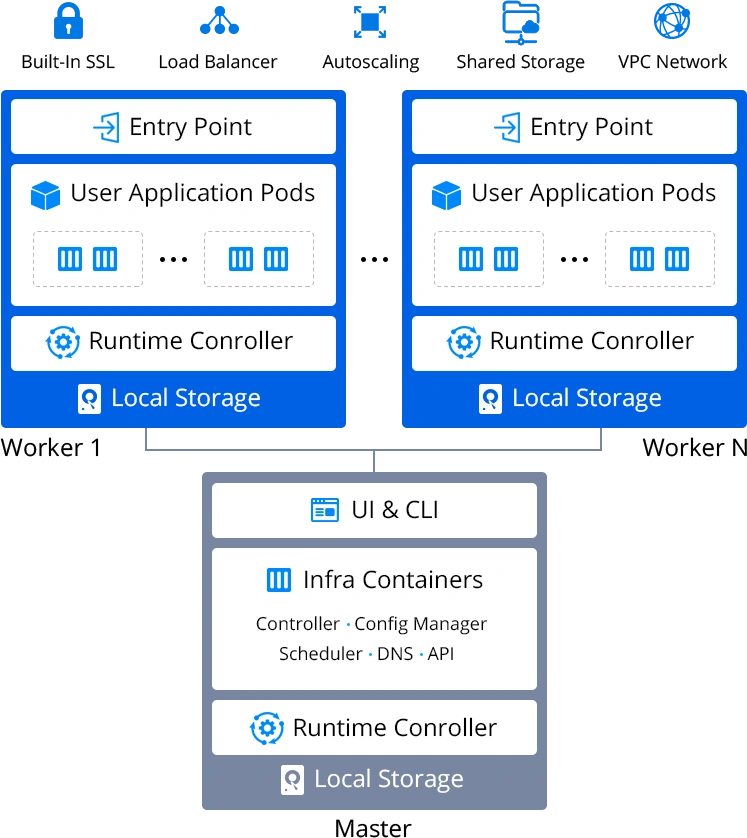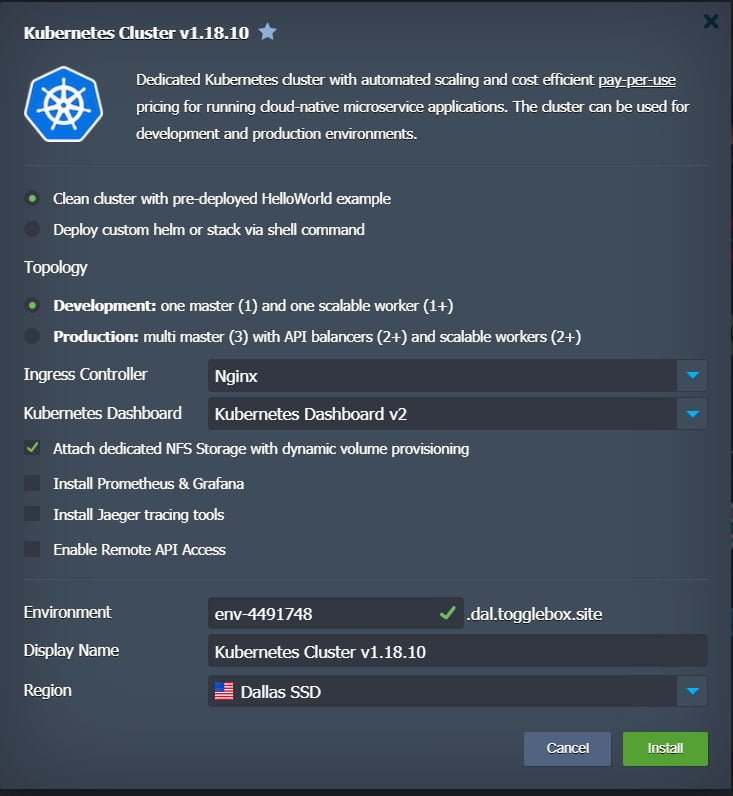Managed Kubernetes Hosting
Production-Ready Environments for Containerized Applications
Pre‑Configured Kubernetes Components For Production Services, Development & Learning
A common hurdle to getting started with Kubernetes is connecting all of its pieces together. Our solution automates the Kubernetes components’ setup out of the box. This dramatically reduces the complexity of launching a Kubernetes environment.
- CNI plugin (powered by Weave) for overlay network support
- HAProxy, Nginx, or Traefik ingress controller
- HELM package manager for auto-installing pre-configured solutions
- CoreDNS for internal host names resolution
- Dynamic provisioner of persistent volumes
- Metrics Server for gathering statistics
- Built-in SSL for protecting ingress network
- Kubernetes Web UI Dashboard
- Multi-Master with API load balancers (optional)

Pay-per-Use Pricing for Kubernetes Cost Efficiency
Automatic scaling with payment based on the real consumption, but not on the server size
Get the required number of resources (RAM and CPU) for your Kubernetes clusters without the need to reserve them in advance or keep on tracking. This is fully managed by the platform and performed automatically within the stated confines. In this way, you won’t over-allocate beyond what is needed, especially during low-use or idle times. In combination with the pay-as-you-use pricing model, automatic vertical scaling feature makes the cloud resource consumption really elastic and efficient.
Easily Deploy Fully Functional Kubernetes Clusters
Easily containerize existing applications and run scalable microservices—keeping them resilient to high loads and failures. Component setup and integration is automated. This shortens your time to market, and reduces overhead costs.
Vertical scaling due to load changes is instantaneous, and is also automated. Horiztonal scaling to add Workers can be automated or performed manually, with integrated Auto Discovery.

What is Kubernetes?
Kubernetes (K8s) is a portable, open-source system designed to automate deployment, scaling, and management of containerized workloads and services. Google open-sourced the Kubernetes project in 2014. Google brought its experience in running production workloads at scale to Kubernetes, and combined it with the best of ideas and practices from the community.
Kubernetes environments are called Pods. A Pod is a set of Linux containers with shared network and storage. Network plugins and ingress controllers support internal and external load balancers, while pluggable storage backends automate data persistence. Kubernetes kubelet orchestrates pods ensuring the cluster is always in a desired healthy state.
Installation of a Kubernetes Cluster, as well as network and storage configuration, is a tedious and error-prone process. Togglebox PaaS automates Kubernetes installation, configuration, updates, and supplies multiple additional Kubernetes services and cluster components:
- Weave CNI plugin to enable internal networking
- CoreDNS as internal DNS
- HAProxy, Nginx, or Traefik ingress controller with pre-configured TLS for external access to services
- NFS storage provisioner for automatic creation of K8s volumes (optional)
- GlusterFS Storage Cluster for persistent storage (optional)
- Kubernetes Dashboard to manage and control the cluster via a modern and intuitive web client
- Helm and Tiller for one-click deployment of hundreds of popular applications
- K9s, kubectx, popeye, and stern command-line utilities to efficiently manage your cluster
- Metrics server, Prometheus, and Grafana for monitoring your cluster and applications health (optional)
- Jaeger for monitoring and troubleshooting of the microservice-based distributed systems (optional, available since 1.15.5)
- Besides K8s specific features, traditional Jelastic features are available too, e.g. vertical and horizontal scaling.
What are the benefits of containers?
Containers are similar to the traditional VPS, but they share the OS among the applications. This reduces overhead and highlights lightweight agility. Containers have their own compute and storage, just like a VPS.
Where containers really set themselves apart, though, is in deployment automation, scalability and portability. Containers are agile and efficient—allowing you to quickly deploy new environments and scale automatically to match workloads.